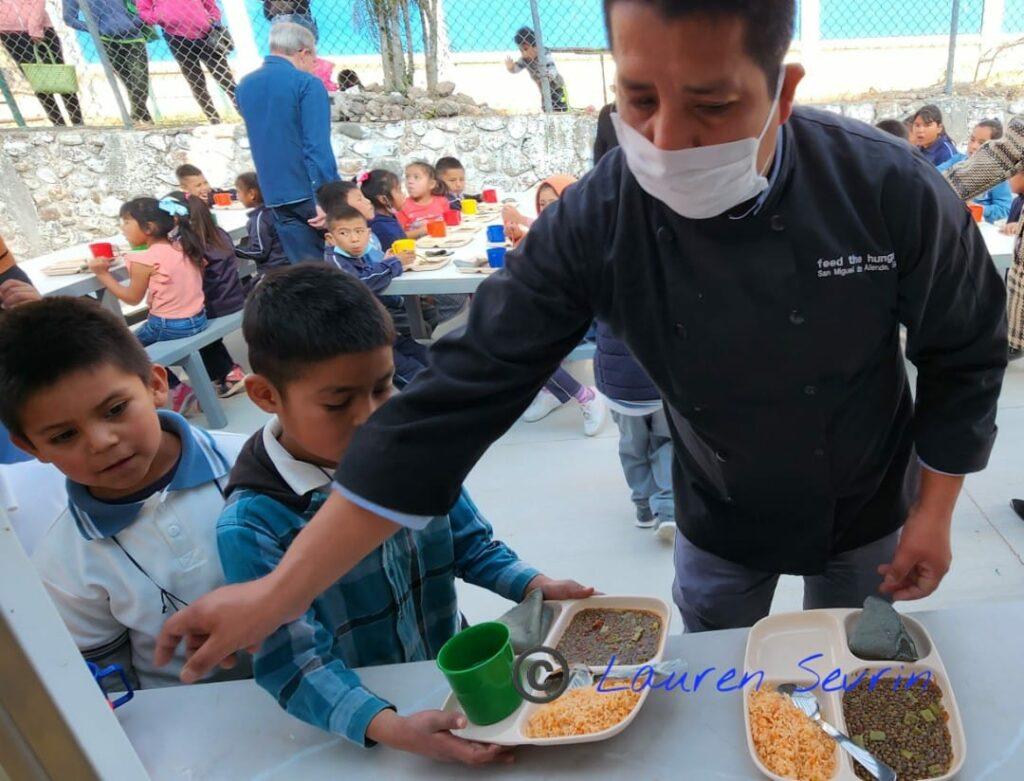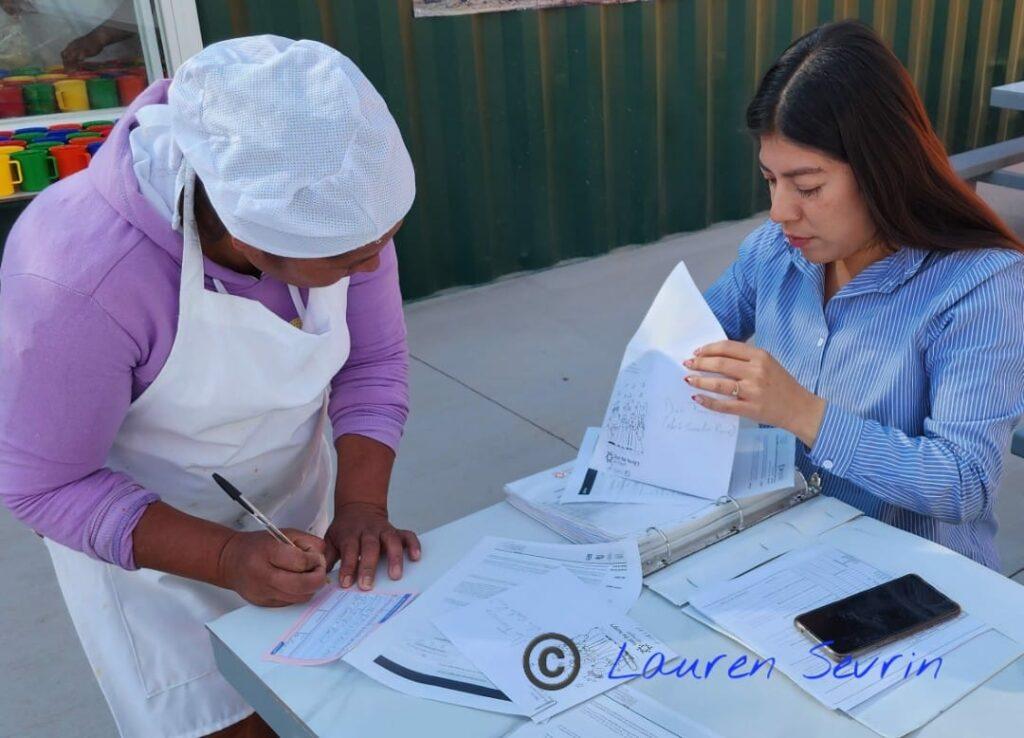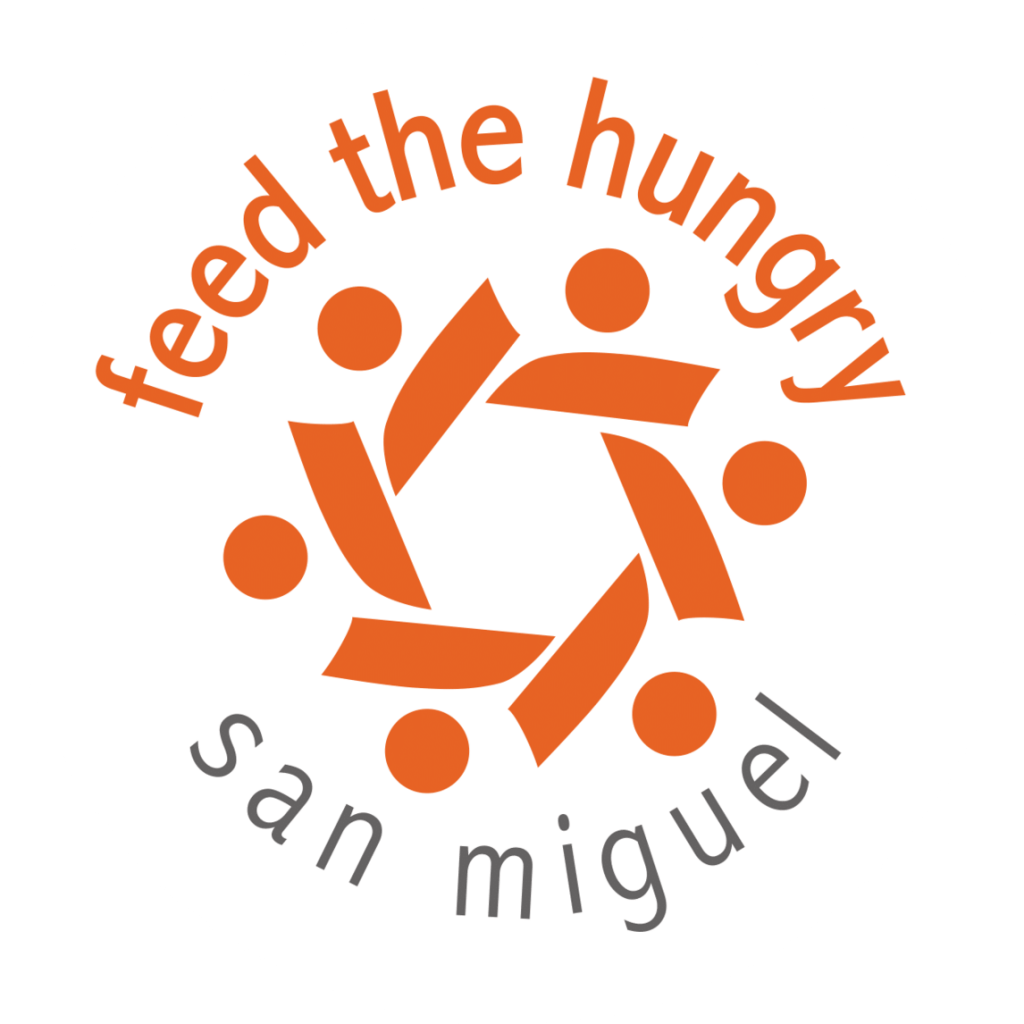As a “newbie” to Feed the Hungry, I am in awe of their accomplishments over the past 30+ years. Feeding 4,700 schoolkids in 35 different schools around San Miguel is a hugely impressive achievement. Just as impressive is the quality of the people who work there—staff and volunteers.
While doing audit work for Amistad Canada, of which Feed the Hungry is a Project Partner, I learned that some Feed the Hungry staffers had actually been “Feed the Hungry kids” many years ago! That sounded like too good a story to miss.
With the considerable help of Feed the Hungry Communications Manager Paola Juárez, we set aside 90 minutes on a busy Monday in March for me to interview Valentin Patlan and Ana Laura Rojas. The interview mostly took place in Spanish, with translation help from Paola. Here are the highlights:
What They Do Today

Valentin is Feed the Hungry’s head chef, a role he has fulfilled ably for the past five years. He was recently promoted to be deputy chief of operations as well. Valentin spends a lot of time on the road, inspecting each of the organization’s 35 kitchens. He also trains the school cooks and their volunteer helpers. Valentin is responsible for devising the menu for the school meals, which now changes monthly (!). Every month, the cooks from all of the schools gather in the kitchen in Feed the Hungry’s Distribution Center to learn the new menu.
Ana Laura is the young nutritionist solely responsible for the Extended Alimentation Program serving 51 kids at risk of malnutrition in 5 different communities. She joined the staff at Feed the Hungry one and a half years ago, after completing a one-year unpaid internship. She manages the program logistics and work schedules, prepares the food bags for distribution, and arranges home visits.
—and How They Got Here
Valentin wanted to study architecture, but the course was too long and expensive for him. He received a scholarship to study culinary arts at a local university instead. After graduating, he spent four years with La Comer in various chef and managerial roles before leaving to join the Ecology Department of the municipality of San Miguel, where he was responsible for building risks inspections, trimming hazardous tree growth, and tending to environmental complaints such as noise pollution.

An acquaintance working as the head chef at Feed the Hungry recruited Valentin as his deputy. He worked there in the mornings and continued in the municipality’s Ecology Department in the evenings. Valentin took over as head chef when his colleague left after five years.
Ana Laura was a nutrition student at a local university when she saw a posting from Feed the Hungry for two unpaid internship positions. The posting attracted huge interest: almost 100 people applied. Ana Laura was awarded one of the unpaid positions. When the internship concluded, she was offered a permanent paid position with Feed the Hungry.
Where They Came From
Valentin grew up in a “Ejido de Tirado”, a community with almost no services, on the outskirts of San Miguel, called Ejido de Tirado, which was later incorporated into the city as a recognized (but still very poor) neighborhood. Both of his parents always worked—his mother as a cleaning lady; his father as a gardener. He and his four siblings always had enough food, but they ate the same thing all the time—beans and rice, with a few lentils thrown in.
Ana Laura grew up in a small community called Las Cañas, 30 minutes from San Miguel. The community was very poor. Her father worked as a gardener, and her mother cooked and cleaned homes. She and her siblings also had enough to eat, also with no variety or balance in their diet.
Her parents pushed her to do more with her life, to get an education. She saw that most of her friends from youth quit school, got married, had a kid, got a job. She wanted to do more. So, she was in the small minority of kids from her town who completed high school, and the even smaller minority who went on to university.
“Food From the Gringos”
Valentin’s very poor community had a kitchen at school. Every Monday, a group of volunteers would arrive at the school bringing a week’s supplies of beans, rice, lentils, tortillas, and a few vegetables. Never any animal protein. The menu never changed—the kids ate the same thing, day in, day out. For years.
The elementary school in Ana Laura’s pueblo also had a kitchen. Although this was 10 to 15 years after Valentin was at school, she was served the same beans, rice, lentils, and pasta with the occasional vegetable. Hibiscus or tamarind water to drink. The same menu, every school day for years!
Not coincidentally, this was the exact same menu that both Valentin and Ana Laura were fed at home. Both sets of parents worked incredibly hard to ensure that their kids didn’t go hungry.
Feed the Hungry was a much more informal organization in those days. It wasn’t formally incorporated as a charity until 2008, and “branding” as Feed the Hungry took several additional years. Valentin, Ana Laura, and their friends didn’t really wonder or worry about where the food at school was coming from. They simply called it, “Comida de los Gringos” (“Food from the Gringos”).
Their “Aha” Moment
Valentin had begun work at Feed the Hungry without realizing that it was the same organization that had fed him school meals as a kid. It was only when he saw the cook from his school, later working as a supervisor at Feed the Hungry, that he made the connection.
In a university course on Public Health, Ana Laura had to research a Non-Governmental Organization (NGO). By chance or destiny, she chose Feed the Hungry San Miguel. Only once she began the research did she realize that it was the same as “Comida de los Gringos”!
Their Message
Both Valentin and Ana Laura were happy to share their individual stories. They are very proud to be giving back to the communities, and of the difference they are making in young people’s lives through improved nutrition and education about food. Both Valentin and Ana Laura were the first members of their families to continue on with higher education. They want to inspire kids in the pueblos and poor neighborhoods to aspire to more, and to know that there is a wide world out there with lots of different possibilities.
Inspirational, indeed. Their stories epitomize the important work done by Feed the Hungry—and the huge importance of fund-raising to support their efforts.



Valentín is a dear friend and it is so wonderful to learn about his life before FTH I am so lucky to help
Him with his English lessons and am so
Proud of his accomplishments professionally and value his honesty and dedication to this wonderful organization.